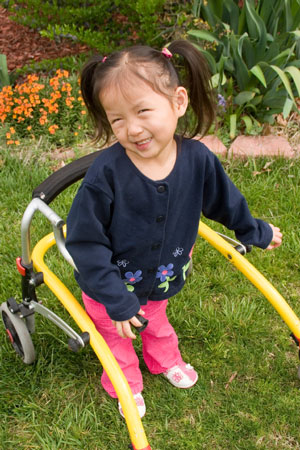At IEL, we have updated our language to reflect our continued understanding of disability. This uses the term “special needs,” but the content remains relevant.
Teachers who are new to project work are often pleasantly surprised at children’s motivation to participate in discussing and planning what to do in their investigations (see Teachers’ Views of the Efficacy of Incorporating the Project Approach into Classroom Practice with Diverse Learners ). They may find it is possible to keep children engaged in circle time longer than they had been able to before they began to implement the Project Approach. However, teachers are sometimes tempted to overextend the length of circle time so that they can “get in” the teacher-child webbing, planning, and discussion that support the development of the project investigation.
These extended circle times can be especially difficult for children with special needs who have trouble paying attention or who have intellectual delays. These children may not disrupt circle time, but the longer the circle goes on, the more likely it is that they will tune out, and the less likely it is that they will engage intellectually with the topic and participate in the discussion.
This does not mean that teachers cannot do project work in inclusive classrooms. In fact, research and practitioner reports indicate that project work may increase the participation and learning of children with disabilities in inclusive classrooms. However, it does indicate that teachers need to develop strategies that will help them adapt the way that they engage children in planning and discussion to better support diverse learners in their class, such as changing the discussion format and increasing the use of visual supports.
For example, discussions and planning that include children with special needs will likely be more successful if they take place in smaller groups. Some teachers hold formal small group time when all children are working in small groups, while others gather small groups of children together at the beginning or end of choice time. Still others intentionally gather small groups of children during choice time. Discussions of project work (e.g., webbing, listing, asking questions) could easily take place in any of these formats. The smaller group format would allow the teacher opportunities to pair children who are experiencing difficulties with more competent peers. It would provide more opportunities for all children—including those with special needs—to engage in meaningful dialogue about the topic. The teacher can bring the contributions from small group discussion to the attention of the whole group at the next circle time, to promote a sense of community and joint investigation. For example, during small group discussions, children might suggest additions to a list of questions for a guest expert who is expected to visit the classroom the following week. The teacher can add the suggestions from each small group discussion to one web that is shared by the whole group.
Increasing the use of visual supports will also likely help some children with special needs to participate in dialogue about project work. Real objects are the most basic type of visual support; inattentive children or children with less sophisticated intellectual abilities are more likely to be motivated to engage in discussion when they are interacting with real objects versus pictorial or verbal representations of objects. On the other hand, photographs or other pictures related to the topic under discussion may help a child who has difficulty communicating his ideas verbally. These pictures might be programmed into a communication device such as a DynaVox, or the child might communicate his or her thoughts by pointing to or holding up a picture that represents the idea he wishes to contribute. For example, following a trip to a farm, a teacher and a small group of children might meet to work on a web about what they saw on their trip. A child with special needs might suggest additions to the web by pointing to pictures of things they saw on their field trip (e.g., cows, a barn, a tractor), while other children might use oral language to suggest their additions.
By adapting the social and physical environments, teachers may support the involvement of some children with special needs in project work. In fact, these adaptations may also increase the ability of typically developing children in the class to participate.

Sallee Beneke
Sallee (BenekeSalleeJ@sau.edu) is Professor and Director of Graduate Programs in ECE at St Ambrose University, Iowa. She coauthored The Project Approach for All Learners (2019) with Michaelene Ostrosky and Lilian Katz. Sallee used the Project Approach as a teacher and has worked to build the implementation of the approach via training and consulting. Sallee co-founded the IEL Project Approach Web site, and Facebook page with Lilian Katz, and she continues to contribute to the site.
Biography current as of 2021
Web Resources
-
Teachers’ Views of the Efficacy of Incorporating the Project Approach into Classroom Practice with Diverse Learners
Source: Early Childhood Research and Practice
This study provides preliminary insight into teachers’ perspectives on ways that the Project Approach can help to support instruction of learners with a range of strengths and needs, and learners from a variety of cultural, economic, and linguistic backgrounds.


